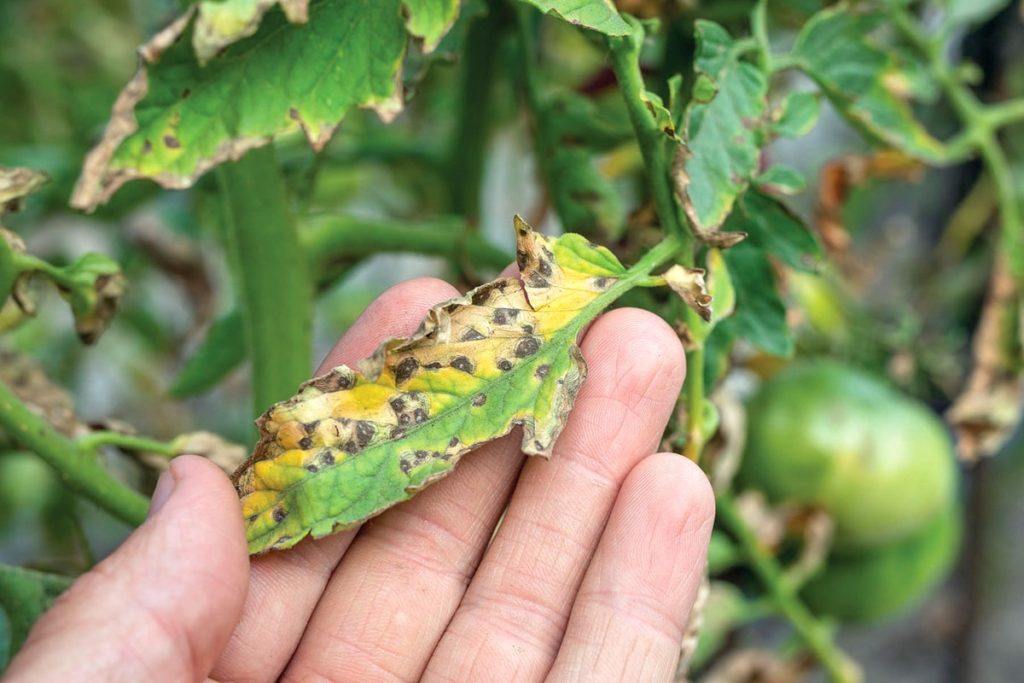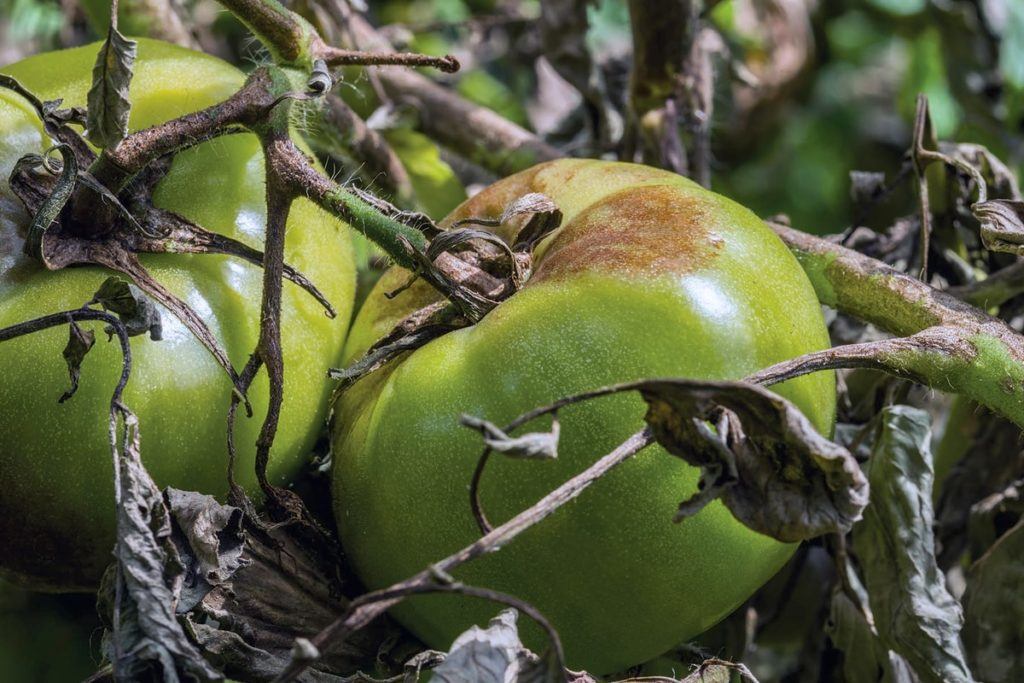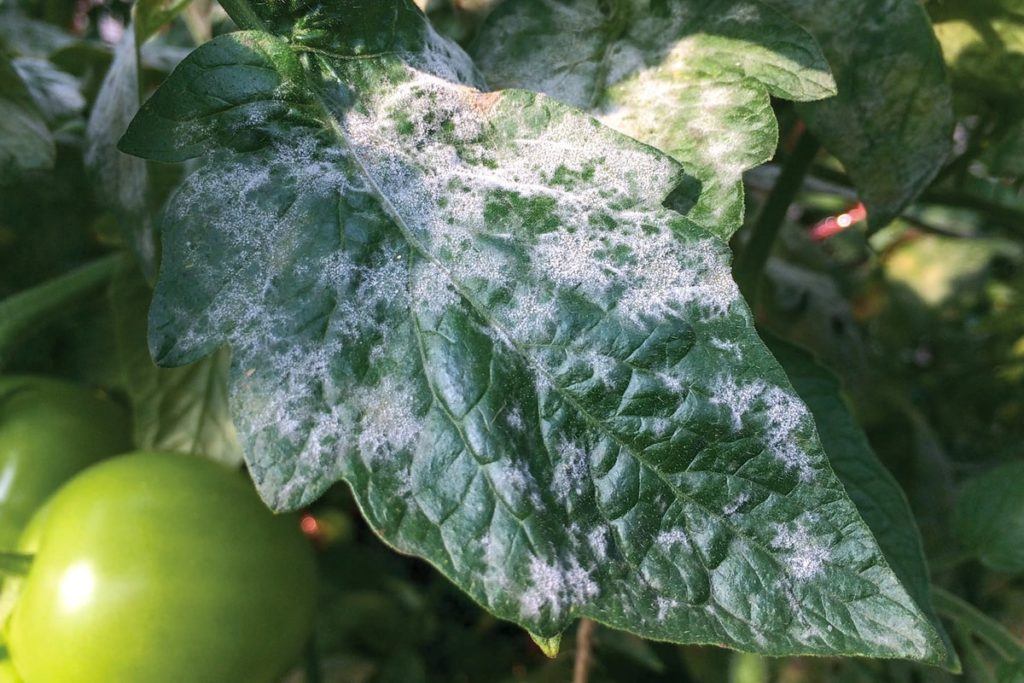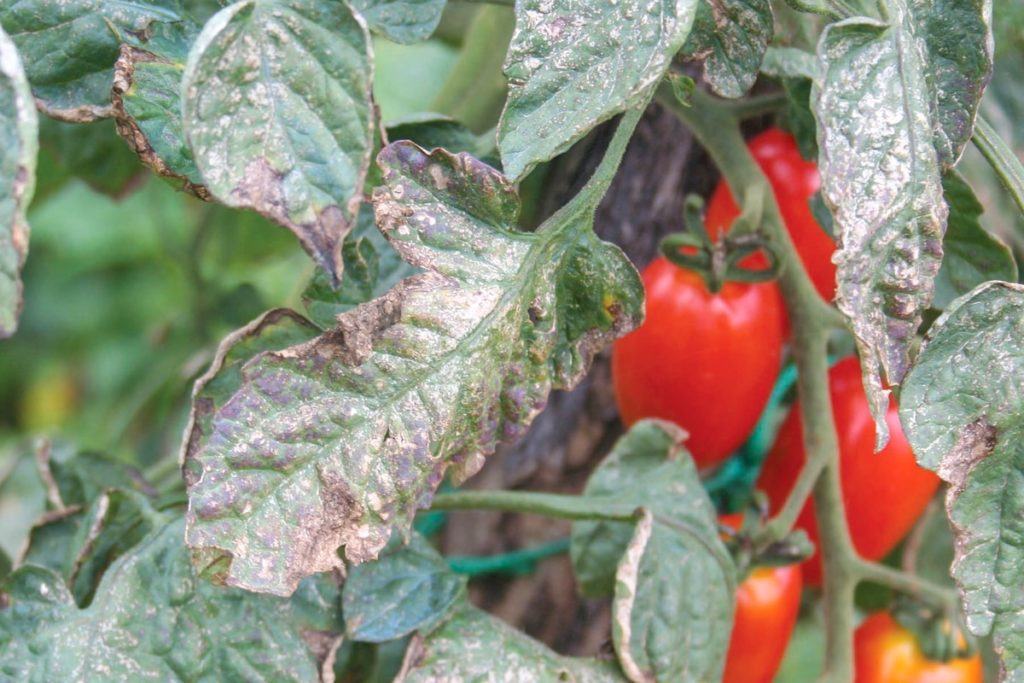There’s nothing more disappointing than seeing your promising tomato crop fall victim to tomato blight or downy mildew. These fast-spreading fungal diseases can absolutely destroy your tomato plants and ruin your crop. Fortunately, there are steps you can take to prevent and treat mildew and blight without toxic chemicals.
1: Space your plants out well
Tomato blight and downy mildew thrive in situations where there is too much moisture and not enough ventilation. You can support both by making sure that your tomato plants aren’t too crowded. Proper spacing also makes it easier to stop fungal infections from spreading between plants. If you’re growing bush tomatoes, you’ll need to plant them one or two feet apart. Vining tomatoes, also known as indeterminate tomatoes, should be planted 18 inches to two feet apart.
2: Water carefully
Mildew and blight need wet leaves and stems. If you make sure there is no excess water on your plants, you can reduce the chances of a fungal infestation. When watering your plants, make sure you only put the water on the soil around the base of the plant. You should also make sure that condensation or leaks can’t drip onto your tomato plants if you’re growing indoors.
3: Keep leaves and fruit from touching the soil
Spores from blight, mildew and other diseases can easily linger in the soil around your plants. It’s therefore important to do everything you can to stop tomatoes or the leaves of the plants from touching the soil.
4: Rotate plantings
You can reduce the chance of fungal infections by rotating your plants. Any fungal spores living in the soil will re-infect plants if you put tomatoes in the same soil two years running. Ideally, you should avoid planting tomatoes in that soil for at least three years.
By the same token, you should avoid planting other vegetables that are prone to the same infections. For example, you should avoid planting tomatoes in the same patch where you grew peppers last year, or planting peppers where you had tomatoes before. Cross-infection is possible between any plants in the same family as tomatoes. This includes sweet peppers, chili peppers, eggplants and potatoes.
5: Inspect your tomatoes for signs of blight and mildew
The sooner you catch a fungal infestation, the better. Blight and mildew spread very rapidly from plant to plant so it’s vital that you identify infected plants so you can take action to protect the rest of your crop.

Early blight first manifests as dark spots of black or brown on the leaves. These spots spread outwards into rings, leaving a target-like lesion. After a time, these marks turn yellow and the leaves wilt. This infection can also be seen on the fruit, too, causing similar spreading spots of discoloration.

Late blight causes fuzzy gray patches on the leaves of tomato plants, affecting the oldest leaves first and then spreading to the rest of the plant. Check the undersides of the leaves, as late blight is usually visible there first. If you spot rough, sunken lesions on green tomatoes, this is often a sign of late blight.

Powdery mildew manifests as a thin layer of whitish discoloration, looking like dust. Mildew doesn’t kill your plants outright and usually doesn’t harm the fruit directly; however, it does consume nutrients that the plant needs in order to flourish.

Downy mildew is very similar but produces fine white filaments instead of a powdery coating. It’s common when your tomato plants are too wet and often affects seedlings.
If possible, it’s a good idea to grow your tomatoes outdoors. Sunlight and fresh air help keep fungal infections at bay. It’s important to make sure that your plants are warm enough, and that the air around them is not too humid.
If you’re still struggling to control blight and mildew on your tomatoes, look for organic products that can treat fungal infestations without dangerous chemicals. EARTH’S ALLY Disease Control is a broad-spectrum fungicide that can be used for blight treatment up until day of harvest to treat and control: powdery mildew, downy mildew, blight, canker, black spot and leaf spot.
